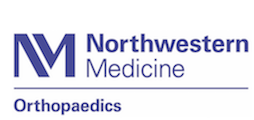|
|

|
« Back
I am a worker compensation patient with a condition called failed back surgery syndrome (FBSS). Everytime I see that term, I think I have somehow failed when really I secretly blame my surgeon. The worker compensation case manager always makes me feel like I'm milking the system. I can't help what happened to me. I'm trying to get better. I heard there is a spinal stimulator that could help. Should I ask about this?
|
|
Most people return to normal function and work quickly after back surgery. But in the case of Failed back surgery syndrome (FBSS) pain continues indefinitely even with conservative care (pain relieving medications, physical therapy).
The pain is often described as dull, aching, and diffuse. Diffuse pain means the patient cannot point to one spot where the pain is located. Instead, the pain is present over a general area. There may be some abnormal sensations with sharp, pricking, and/or stabbing pain.
The cause and effect of FBSS is not well understood. It is suspected that there are multiple factors and variables contributing to this condition. Many studies of worker compensation patients have consistently shown that this group has worse outcomes than other non-worker compensation patients with the same diagnosis and same (or similar) treatment. Thus, being a patient on worker compensation status is an important factor.
With the new focus on evidence-based treatment, the Department of Labor and Industries is taking a closer look at treatment for FBSS. They are trying to find cost-effective ways to get workers back on their feet and back on the job. Toward that end, in Washington state a study was done comparing the costs of three different treatments for FBSS.
The study was actually the second one done with a focus on worker compensation patients. The first study reported on the results of three separate treatment approaches. The three treatment groups included: 1) spinal cord stimulation, 2) pain clinic, and 3) usual care. This second look compares the costs associated with each treatment method. The most cost-effective treatment is discussed.
In the first study, the authors measured outcomes over a two-year period of time based on pain, disability, and use of opioid (narcotic) medications. They found that five per cent of the spinal cord group reached the treatment goals in these three areas. Only three per cent of the patients treated at the pain clinic met the outlined treatment goals. And 10 per cent of the group receiving usual care had a successful final outcome. Success was defined as at least a 50 per cent improvement in pain, less than daily use of opioids, and a two-point improvement on the disability score using the Roland Disability Questionnaire.
Now taking a look at the costs of each approach, it turned out that the spinal cord stimulation was the most expensive. And the added costs were not offset by better results or fewer visits to the doctor than the usual care approach.
The differences in results could not be attributed by differences among the patients because they were evenly matched by age, sex (male versus female), and other personal characteristics. It was observed that the spinal cord stimulation group had more intense leg pain that had been present longer than in the other two groups.The worker compensation group was also more likely to have a lawyer representing their case.
To give you some idea of the costs involved in treating this patient population, the combined costs of total productivity loss and medical costs for each group was as follows:
$98,637 per patient for the spinal cord stimulation group
$84,340 per patient for the pain clinic patients
$67,292 per patient in the usual care group
The conclusion of this study was that usual care for failed back surgery syndrome is the most successful and least expensive course of treatment. Spinal cord stimulation is not a cost-effective approach to this problem. Other studies have shown that some patients do get better with spinal cord stimulation. Ask your surgeon about this treatment idea for you. There may be some immediately obvious reasons why this approach would/would not work for you.
|
References:
|
|
|
« Back
|
|
|
|
*Disclaimer:*The information contained herein is compiled from a variety of sources. It may not be complete or timely. It does not cover all diseases, physical conditions, ailments or treatments. The information should NOT be used in place of visit with your healthcare provider, nor should you disregard the advice of your health care provider because of any information you read in this topic. |
 | All content provided by eORTHOPOD® is a registered trademark of Mosaic Medical Group, L.L.C.. Content is the sole property of Mosaic Medical Group, LLC and used herein by permission. |
|
